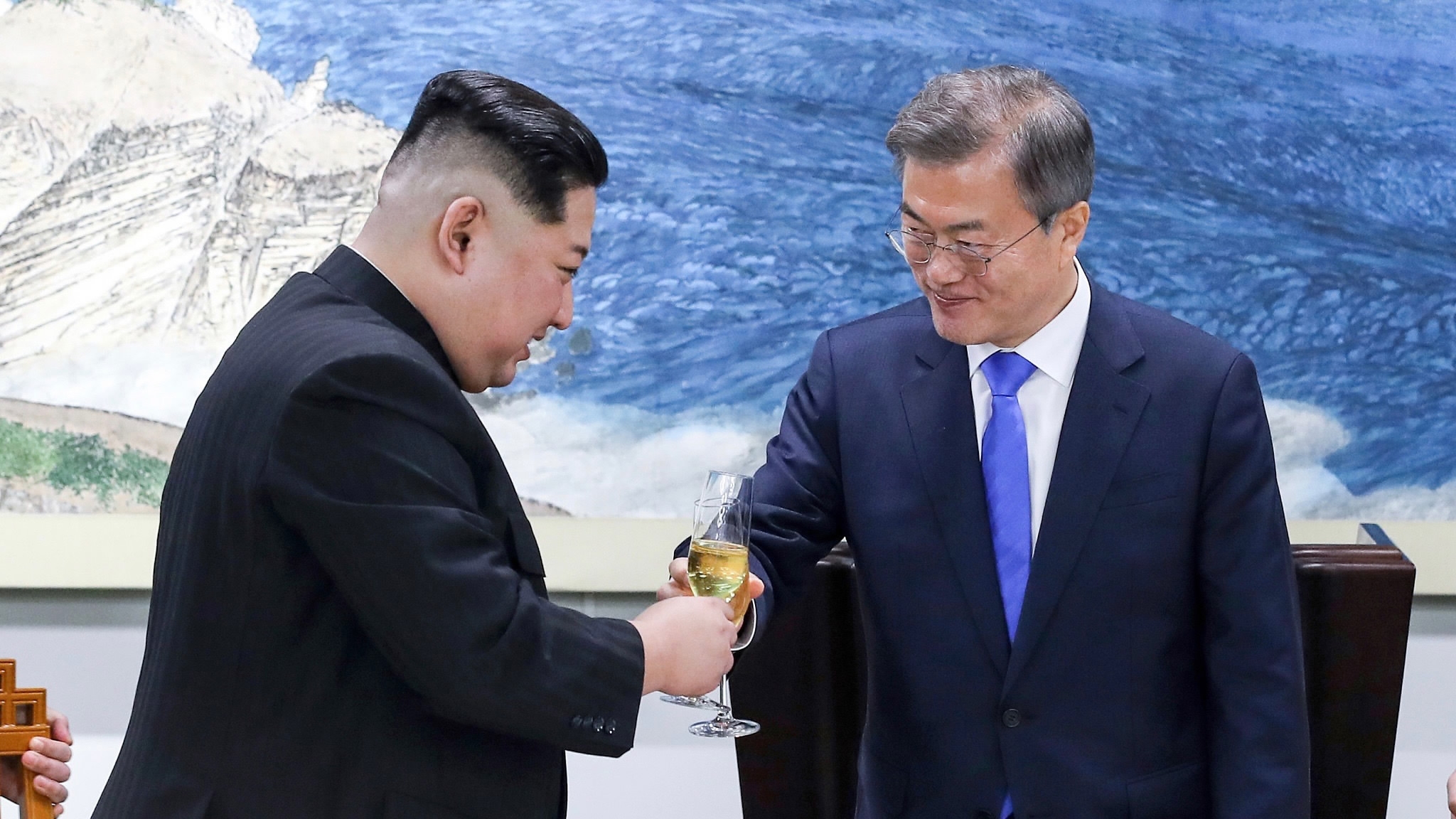
Opinions
22:41, 27-Apr-2018
Opinion: Panmunjom heralds peace on Korean Peninsula
By Wang Xiaonan

The "truce village" of Panmunjom is ultimately on course to become a "peace village," as Kim Jong Un and Moon Jae-in pledged to “approach a new era of national reconciliation, peace and prosperity” after the first inter-Korean summit in over a decade.
It was the first time for a leader of the Democratic People’s Republic of Korea (DPRK) to cross the border and set foot on Republic of Korea (ROK) soil. When Kim and Moon shared their first handshake, many Koreans wept, as the Korean Peninsula, much blighted by hostilities and tensions for 65 years, finally saw a new dawn.
The summit was highly anticipated yet many suspected it would be an anticlimax, as two previous meetings between Kim’s father Kim Jong Il and former ROK presidents Kim Dae-jung and Roh Moo-hyun in 2000 and 2007 respectively failed to bring permanent peace to the peninsula and the 80 million Koreans.
But Friday’s summit yielded a high-profile joint statement – Panmunjom Declaration for Peace, Prosperity and Unification of the Korean Peninsula. The two leaders solemnly declared “there will be no more war on the Korean Peninsula and thus a new era of peace has begun” at the historic site of Panmunjom.

View of Panmunjom /VCG Photo
View of Panmunjom /VCG Photo
The ill-fated Panmunjom will embrace peace again after decades of ups and downs. Originally a farming enclave, the village has been uninhabited since the signing of the Korean Armistice Agreement in 1953. But the demilitarized zone has never been at peace, with a million military personal on guard in case of possible conflict.
Over the past decades, it’s become known as the most fraught border location in the world. As one of the last relics of the Cold War, the dangerous yet fragile place had the potential for fatal consequences.
In the sweltering summer of 1976, a violent incident erupted. On August 18, US officers led a UN team to trim back the branches of a 12-meter-high poplar tree that, as they said, was blocking their view of the UN command post within the demilitarized zone. Just two weeks before on August 5, the DPRK had accused the US and the ROK of trying to reignite war, and the following day on the 6th, a US-led team aborted the attempt to cut down the poplar after DPRK troops told them to leave the tree alone. So a smaller team on the 18th, headed by two US officers, told DPRK troops stationed there that they were going to prune the branches.
The poplar was significant, however, because DPRK soldiers said that Kim Il Sung had personally planted and nourished it. So the trimming was considered a provocation – a conflict ensued in which two US officers died. The Americans did not stand down. Instead, then US president Gerald Ford sent even more troops, accompanied by ROK soldiers, to cut down the tree – only this time, the Americans had fighter jets flying overhead and an aircraft carrier offshore just so the DPRK wouldn’t attack. A second war did not break out, but it further complicated the situation in Panmunjom.

DPRK leader Kim Jong Un and ROK President Moon Jae-in plant a pine tree in Panmunjom, April 27, 2018. /VCG Photo
DPRK leader Kim Jong Un and ROK President Moon Jae-in plant a pine tree in Panmunjom, April 27, 2018. /VCG Photo
In that incident, Moon Jae-in, at the age of 23, was one of the ROK soldiers sent to cut down the tree. Now 42 years later, he stepped on the land again, this time as ROK president who has unswervingly worked for peace and stability on the Korean Peninsula.
Moon and Kim planted a pine tree, sown in 1953, using water and soil from both sides. The pine tree, believed to be an auspicious symbol that will bring peace and prosperity, is giving life to true peace on the Korean Peninsula.
Panmunjom rose to “fame” because of an armistice deal, but now it’s in the limelight because of the landmark Kim-Moon summit that will hopefully reunite the Korean people.
(The author is a reporter for CGTN Digital.)
(Cover Photo: DPRK leader Kim Jong Un and ROK President Moon Jae-in clink their glasses at dinner in "Peace House" on the ROK side of Panmunjom, April 27, 2018. /VCG Photo)

SITEMAP
Copyright © 2018 CGTN. Beijing ICP prepared NO.16065310-3
Copyright © 2018 CGTN. Beijing ICP prepared NO.16065310-3